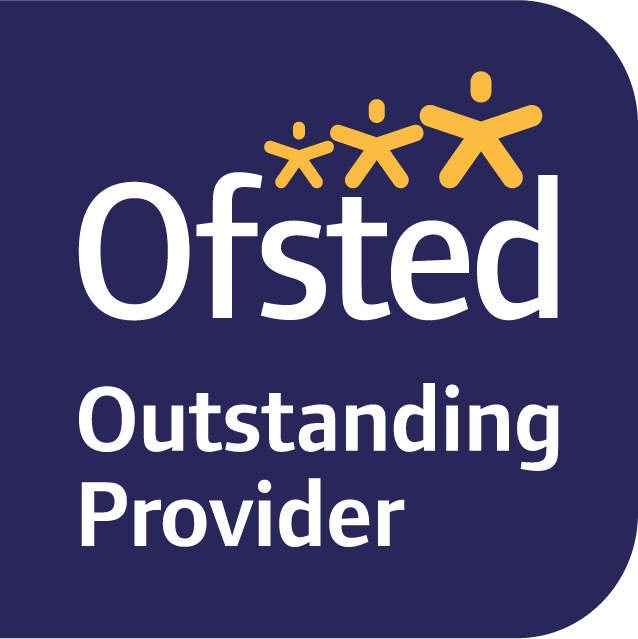English
English opens doors for children to engage with learning across the curriculum and prepares them to live a fulfilled life as part of society. It is through language that children can comprehend and communicate their understanding across all subjects.
Reading
At St. Dunstan’s, we value reading as a fundamental skill to support the children’s emotional, cultural and educational development. In simple terms, reading can be separated into two main parts: word reading and comprehension.
Fluency
Fluent readers can read accurately, at an appropriate speed without great effort (automaticity) and with appropriate intonation. One way in which we develop this is by modelling reading aloud as skilled readers. Following this, it is important for children have regular opportunities to practise reading aloud where they can be given specific feedback. Reading fluency can be described as a bridge to comprehension, as truly fluent readers have a greater ability to focus on comprehending texts.
Vocabulary
Readers often encounter unfamiliar words in texts and there are different strategies that can be utilised to find the meaning of these words. At school, we model how to use these strategies when reading aloud. It would be beneficial to follow a similar structure when reading at home by modelling these strategies and encouraging your child to practise using them to understand new vocabulary.
Strategies for Unfamiliar Vocabulary:
- reread sentence: There may be clues in the wider sentence that help the reader to work out the unfamiliar word
- root word: Use a known definition for the main part of the word and consider how a prefix or suffix changes it, for example in ‘unafraid’ the prefix ‘un’ reverses the meaning to ‘not scared’
- prior knowledge: The children may have heard the word in a different context and this might help them to unpick the meaning
- dictionary: For totally unfamiliar words, the best strategy is to use a dictionary to find the exact definition
Comprehension
A great starting point for developing comprehension skills is activating prior knowledge. For non-fiction, this could be considering what the child already knows about the subject matter and for fiction, this could be thinking of a time when the child has had a similar experience. Comprehension can then be broken down into two main components: literal and inferential. For literal comprehension, children are encouraged to retrieve and summarise information from texts. Inferential comprehension is more complex, as it involves numerous skills that come together to help readers form inferences. To support children, we can model making inferences when they are reading and then provide them with opportunities to practise the same skill. Here are some examples:
- empathise (understand feelings)
- visualise (imagine what you would see)
- predict (what might happen next)
- analyse (grammar choices, structure)
- question (generate about characters or events)
- compare (different characters, other texts)
- connect (with prior knowledge or experience)
Recommended Reading Lists
Phonics
We follow Little Wandle Letters and Sounds Revised for the teaching of early reading and phonics. This programme offers a systematic progression of phonics learning that enables children to become highly competent readers. It is delivered through direct teaching in frequent, short bursts. As part of the programme, the children have regular opportunities to apply their learning to help it become embedded in their long-term memory.
Writing
Writing is a complex process, as there are multiple skills required to communicate clearly and effectively. These skills can be categorised into transcription (the act of putting words on paper) and composition (articulating and structuring ideas). High quality texts by established authors are used to model, stimulate and ignite writing.
Transcription
Handwriting:
 From Reception, we prioritise teaching the correct tripod pencil grip to support neat handwriting. In line with Little Wandle, Reception use print handwriting where each letter is formed separately and not joined together. This enables a focus on establishing secure letter formation. Across Year 1 and Year 2, we ensure children are secure in their letter formation before teaching pre-cursive handwriting with ‘lead ins’ and ‘lead outs’. As the children gain confidence in pre-cursive, we begin to introduce cursive handwriting with diagonal joins for some letters.
From Reception, we prioritise teaching the correct tripod pencil grip to support neat handwriting. In line with Little Wandle, Reception use print handwriting where each letter is formed separately and not joined together. This enables a focus on establishing secure letter formation. Across Year 1 and Year 2, we ensure children are secure in their letter formation before teaching pre-cursive handwriting with ‘lead ins’ and ‘lead outs’. As the children gain confidence in pre-cursive, we begin to introduce cursive handwriting with diagonal joins for some letters.
Spelling:
Our approach to teaching spelling is based on the two key principles of phonology and morphology. We encourage you to support your child to use these strategies when writing at home. It is also beneficial to look for these spelling patterns when reading to help familiarise and increase children’s awareness of spelling.
Phonology involves using knowledge of phonics to break down words into their individual sounds, for example ‘ch-ur-ch’ or ‘a-pp-ear-a-n-ce’.
Morphology is breaking words into chunks of meaning using root words, prefixes and suffixes, for example unhelpful can be broken into un (prefix), help (root word) and ful (suffix). We encourage you to support your child to use these strategies when writing at home. It is also beneficial to look for these spelling patterns when reading to help familiarise and increase children’s awareness of spelling.
Composition
Grammar:
The grammatical skills drive our writing curriculum, as this is what enables children to communicate clearly for a range of purposes and audiences. There is clear progression of grammar across the school, so children build on skills they have learnt in previous years. It is taught both explicitly in grammar lessons and implicitly through writing lessons. As with any new skill, repeated practice is essential for children to embed these skills into their long-term memory. One way we do this is through the use of online quizzes. Over time, we gradually remove scaffolds for children so they are able to apply their grammatical skills more independently. As children move up through our school, they learn about how to make informed choices about their use of different grammatical structures by considering the intended impact on the reader.

The Writing Process:
At St. Dunstan’s, writing is taught as a process and teachers model each step of this process. The planning stage enables children to generate ideas and map out the content of their writing, which subsequently frees up space in the working memory to focus on other elements of composition. The purpose of the first draft is for children to compose sentences by thinking about their grammatical structure and punctuation. Revising provides the opportunity to reflect on the effectiveness of their writing and make changes at word, sentence and text levels. Editing provides a final chance to check the accuracy of their writing. Finally, children are given time to publish their work in their neatest handwriting. Our children have a great sense of pride of work they publish in their special ‘First of the Month’ books.


